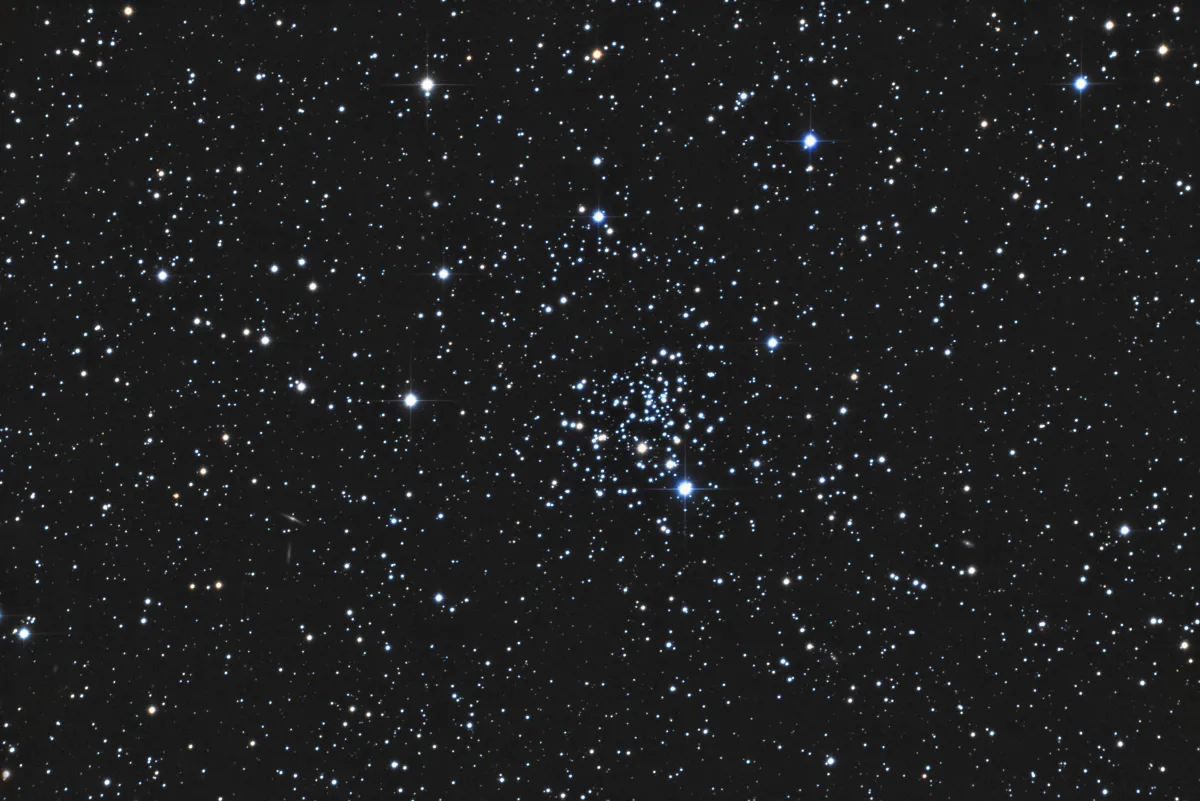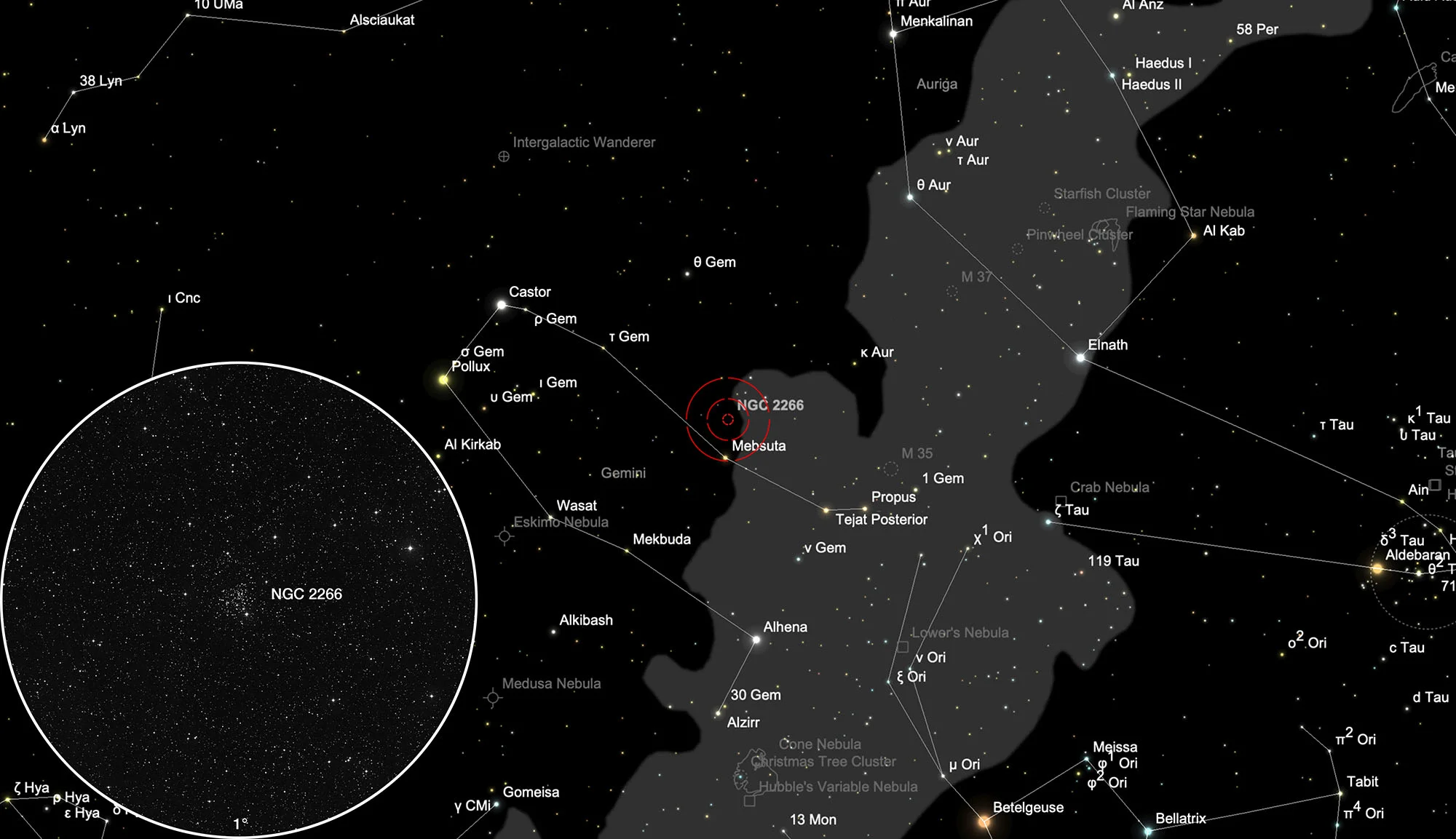Open Cluster NGC 2266

History
The open star cluster NGC 2266 was discovered on 7 December 1785 by the German-British astronomer William Herschel with its 18.7 inch reflector. [277]
Physical Properties
The cluster is of the Trumpler type II2m, measures about 7 arc minutes in diameter and has an apparent magnitude of 10. [277]
Also known as Melotte 50, NGC 2266 is a small, compact star cluster made up of more than 190 stars, most of them main sequence stars, and a clump of 11 red giants. Its age is estimated at 1.2 billion years, about the age of the Hyades or Praesepe. It is about 11.3 kpc from the galactic centre, 600 pc above the galactic plane and 2.80 ± 0.15 kpc from us. [381, 382, 383]
| Designation | NGC 2266 |
| Type | OCL (II2m) |
| Right Ascension (J2000.0) | 06h 43m 19.2s |
| Declination (J2000.0) | +26° 58' 10" |
| Diameter | 5 arcmin |
| Visual magnitude | 9.5 mag |
| Metric Distance | 3.040 kpc |
| Dreyer Description | Cl, pS, eC, Ri, st 11…15 |
| Identification, Remarks | WH VI 21; h 403; GC 1442; OCL 471 |
Finder Chart
The open star cluster NGC 2266 is located in the constellation of Gemini. The best viewing time is September to June.
Visual Observation
400 mm aperture: It's a pretty unspectacular open cluster with three brighter stars in a row. — Taurus T400 f/4.5 Dobsonian, Bernd Nies, Glaubenberg Langis, 28 February 2022
